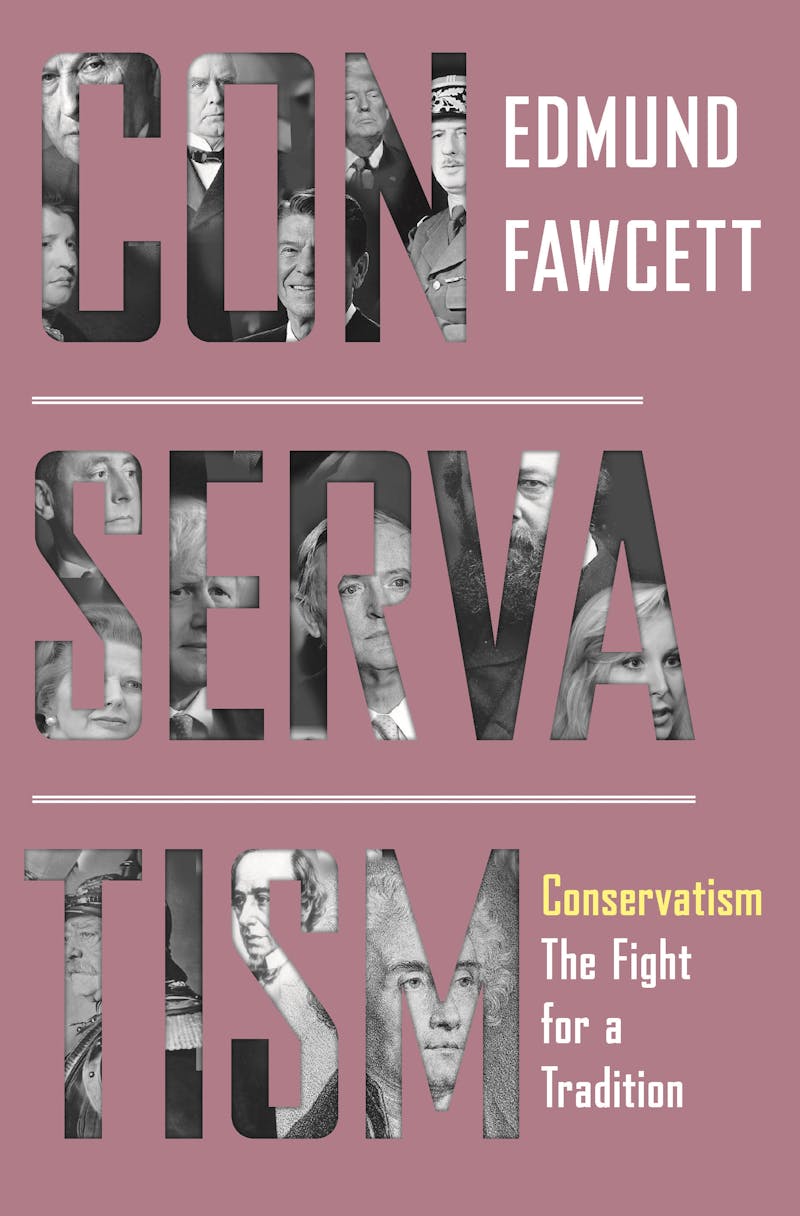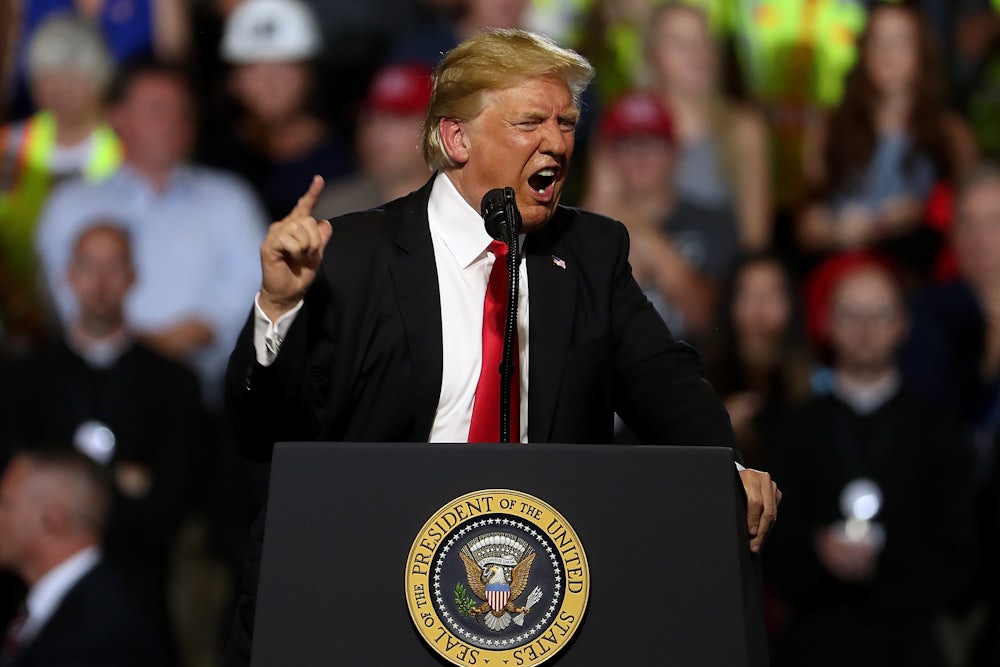Edmund Fawcett has remarkable timing. His book Conservatism: The Fight for a Tradition appeared two weeks before the U.S. election and a few weeks before a Brexit deadline. With Donald Trump’s refusal to concede defeat in a free and fair election, support in the Republican party for this openly authoritarian move, and Britain dropping out of a free-trade customs union, we can safely say that conservatism as we’ve known it is in an existential crisis. A tradition that once defined itself by the virtues of the rule of law, a respect for institutions, and economic liberalism has sunk into kleptocratic corruption and populist showmanship. The party of Lincoln has found itself undermining democracy and free trade, led by a would-be authoritarian con man professing racism and xenophobia. How did it happen?

While today’s crisis may be a break with the liberal tradition of conservatism, Fawcett shows, it is a return to its deep anti-democratic and anti-Enlightenment roots. The French Revolution was the catalyst of conservatism as it washed away feudalism and monarchy, at first bringing liberalism and political and human rights. Led by Robespierre, violent elements on the far left of the parliamentary Convention took power and brought the Reign of Terror in 1793; they were answered by a similarly violent reaction. The counterrevolutionary writer Joseph de Maistre believed the bloodletting was a lesson from God, who was punishing France for its sins. He believed that kings and nobles had to take back the guillotine and embark on their own process of bloody cleansing. Punishment and fear, he believed, would bring an end to the outbreak of radical, scientific skepticism and disrespect for traditional authorities. So began the conservative movement to restore European absolute monarchy and theocracy, and to protect it where it still existed, for example, in Russia.
Conservatism found a more restrained presiding spirit in the Irish writer Edmund Burke. Like de Maistre, he opposed the idea that the rational processes of the Enlightenment would improve society. For Burke, progress would come, but he believed it would come through a mixture of old traditions and reason. Also like de Maistre, he believed that established, “consecrated” authorities, those that had grown through long, historical custom, were the only legitimate ones. Thus he defended oligarchy and wealth and the genius of tradition over individual genius and scientific innovation.
For this reason, Burke loathed the popular sovereignty of the French Revolution. Burke echoed James Madison’s fear of majoritarian rule—and what Madison meant by majority was the rule of any commonfolk over a propertied white elite. Anyone surprised at modern conservative opposition to positive liberty needs to go back and read Burke: He abhorred The Declaration of Rights of Man and of the Citizen (1789), written in part by the Marquis de Lafayette in consultation with Thomas Jefferson, because it repeated many of the ideas of the American Declaration of Independence, which he considered a “digest of anarchy.” The ideas he opposed were that “the aim of all political association” was to preserve the rights to “liberty, property, security, and resistance to oppression” and that “Liberty consists in the freedom to do everything which injures no one else.” For Burke and de Maistre alike, the people needed natural, traditional masters and the “Gothic muddle” of hierarchy, tradition, and the religious authority.
Conservatism makes clear the long, anti-democratic roots of the tradition. Famed conservative leaders, such as the British Prime Minister Benjamin Disraeli, protected corporate institutions, not individual rights; he defended “order, property, and religion” by supporting “the church, crown, universities, and the Lords.” It should come as no surprise that one of the most influential nineteenth-century American conservatives was the southern apologist for slavery, John Calhoun. He also decried the American rejection of free trade: Northern tariffs helped develop America into an industrial powerhouse, but they stymied the value of the slavers’ cotton exports. The old fear of majority rule in the U.S. was not only philosophical—it was the plantation owners’ fear that democracy would bring freedom to slaves, more power to poor whites, and the economic dominance of the industrial class.
While conservatism has its roots in anti-Enlightenment, anti-scientific, and anti-democratic ideals, Fawcett also shows that, in America, Britain, France, and Germany (his points of focus), conservatism has been most successful when it gives up its reactionary DNA and leads in liberal and democratic reforms. While liberal democracy is “a child of the left,” Fawcett maintains, it was, in fact, built by conservative political movements and depends on them still. Much of the book is the story of conservative statesmen and women (Margaret Thatcher is the lone leading woman in the book) who evolved toward working within and leading liberal democracy.
If the book has a hero, it might be Robert Gascoyne-Cecil, Lord Salisbury, builder of the modern conservative Tory party in the last decades of the nineteenth century. An anti-egalitarian, Salisbury saw liberalism as an “untenable religion.” He “privately” complained about the “delusions of progress,” but he publicly fashioned himself as a “patrician democrat.” He defended John Stuart Mill’s utilitarian vision of positive liberty by which a person is free to pursue their interests as long as they do not undermine the interests of others (by which he meant fellow Europeans). He believed that the government had to support the popular demand for higher material living standards and created the Workman’s Compensation Act of 1897. He was an ardent colonialist and diplomat, who used his political skills to maintain and expand the British Empire. By defending the imperial interests of the aristocracy, along with living standards and workers’ rights, he showed that the British conservative party could serve both elite and popular interests while maintaining the Pax Britannica.
In much of Europe in the second half of the twentieth century, the best hope for conservatism resided in liberalism. In Britain, France, and Germany, conservative parties that were once anti-democratic and openly embraced racist imperialism moved toward the democratic center. In the 1970s, conservative parties became liberal-conservative parties, embracing individual rights and consumerism, along with business interests. From Georges Pompidou to Valéry Giscard d’Estaing and Jacques Chirac, French conservative leaders embraced liberalism and rejected the far right to evolve and survive in the new American age.
The oxymoron of forward-looking conservatism also defines the political success of the German Christian Democratic Union, a pro-business, pro-Europe, and, until recently, pro-Atlantic alliance party that united the right after World War II. From Konrad Adenauer to Helmut Kohl to Angela Merkel, the CDU has led a progressive and politically open Europe and battled the German far right. In 2015, in a highly contested move, Angela Merkel welcomed 1.4 million Syrian refugees to Germany. She formed three grand coalition governments with the conservative Christian Social Union in Bavaria, the Social Democrats (socialists), and Greens. Fawcett implies that Merkel’s lasting power and influence have shown that sustainable, democratic conservatism works best when it leans left, rejects racism and nationalism, and works with trade unions.
The era of liberal conservatism appears to be passing, threatened by the far right and authoritarian nationalist movements. Merkel’s foreign policy has been defined by her political and economic support of authoritarians in Hungary and Poland, where Germany keeps part of its manufacturing base. Far from looking to protect old institutions and seek postwar liberal stability, figures such as Donald Trump have threatened NATO and allied themselves with dictators, authoritarian foes of the U.S. and Europe, as well as home-grown far-right groups. Some traditional conservative parties now pose open threats to the liberal democratic order. Indeed, in Spain, the right-wing Popular Party and the center-right Citizens Party made electoral alliances with the far-right, nationalist, racist, anti-feminist VOX party. Nigel Farage’s Brexit Party pulled the British Tories into what became a successful nationalist Brexit campaign. Today’s conservatives express their politics in racist dog whistles, xenophobia, and friendly relations with the white nationalist Trump administration.
There’s no comfortable way to tell this story. At the beginning of his book, Fawcett declares himself “a left-wing liberal” and says he hopes to do an “objective” job of telling the intellectual and political history of conservatism. To write the book, he has consulted with a pro-Brexit member of Boris Johnson’s government and conservative members of parliament. In that sense, the book has a sort of friendly dinner party appeal by which any conservatives in the room will not be made to feel ill-at-ease by what should now be a very uncomfortable history. To avoid any indigestion, Fawcett has not used the words nationalist, racist, misogynist, homophobic, or even evangelical or libertarian.
That’s a problem. The road to this conservative crisis has been neither polite nor civil, and it’s impossible to reckon with the state of the Republican Party today without accounting for its history of racist, segregationist policies, voter suppression, and its opposition to women’s rights and gay rights. Fawcett’s history is enriching and worth reading. But it will take a tougher, more critical eye to understand how Atlantic conservatism broke so dramatically with liberalism to embrace the anti-Enlightenment and anti-democratic politics of hate, repression, anti-science, paranoia, and revenge that Joseph de Maistre expressed with such zealous elegance 225 years ago.
